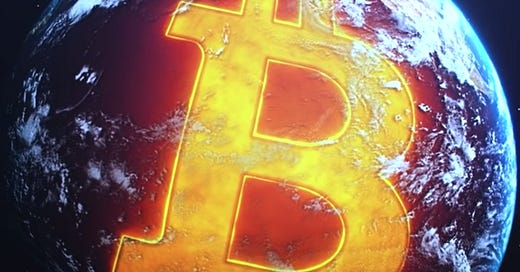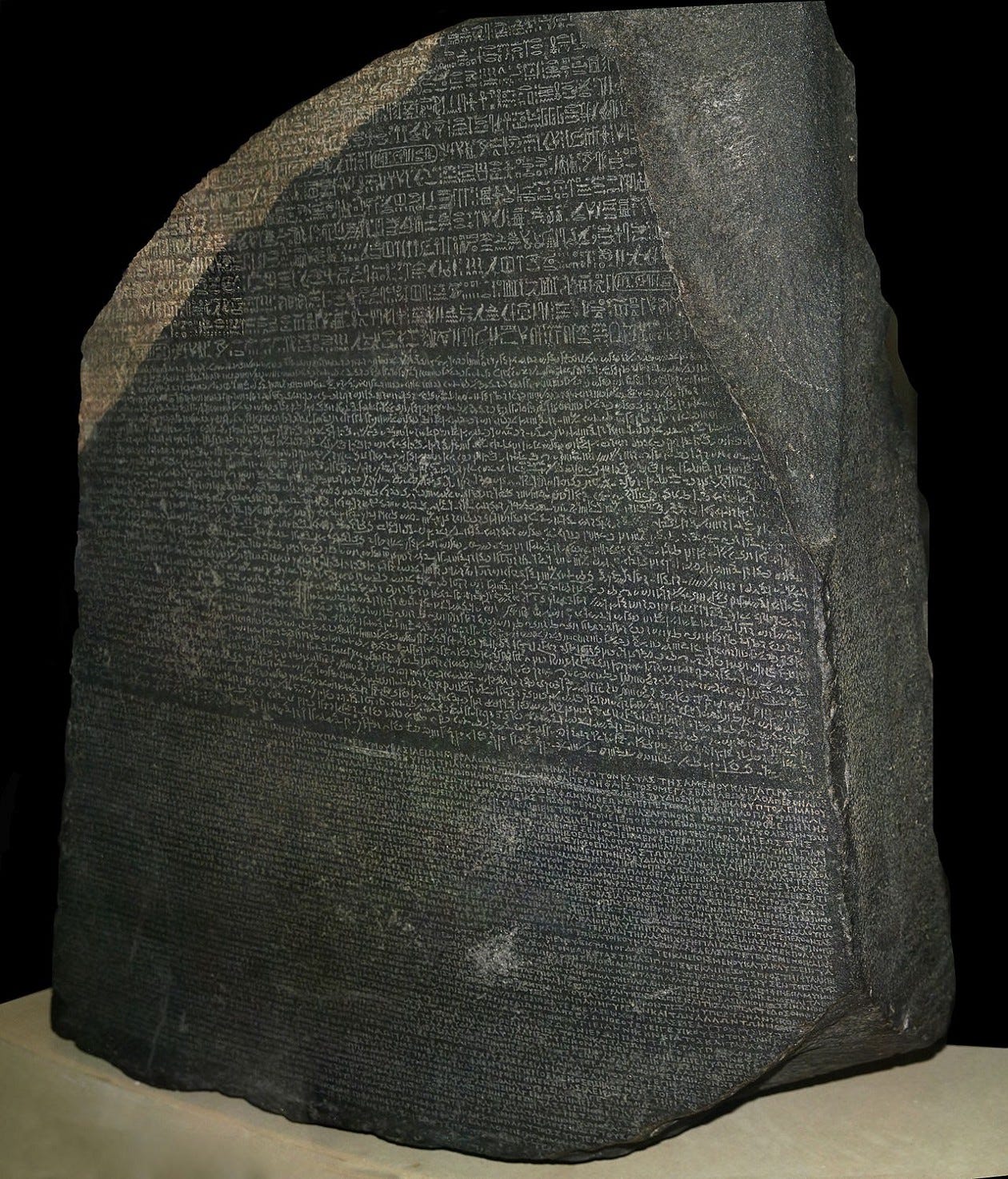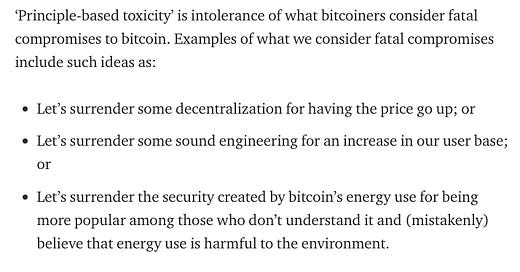

Discover more from The Freedom Analects
Sovereignism Part 4: The Rise of Property and Organized Crime
A 12-part essay series exploring the disruption of the nation-state and the subsequent amplification of individual sovereignty during the Digital Age.
This series is loosely based on the 1997 masterwork: The Sovereign Individual.
“Exodus believes in empowering the individual to control their wealth and financial destiny and has provided financial support for the research and writing of this series. Exodus has no editorial control over the content of these writings.”
In Part 3, we looked at mega-politics: the macrostructural patterns of civilization historically and, specifically, the variables which shape socioeconomic organization. This discussion took us through the logic of violence, the associated bootstrapping process of societal development, and the evolutionary game theory embedded in human affairs. In Part 4, we will dig into history again, exploring the origins of government, organized crime, and property to see how these social constructs will change as sovereignism rises during the Digital Age.
Money, Government, and Organized Crime
“An apparently simple shift in the character of work can radically alter the organization of society.” — The Sovereign Individual
Contrary to conventional wisdom, government is not the originator of money. In truth, money is the originator of government. When a society begins to engage in trade, it benefits from the division of labor and accumulates an economic surplus. The first major shift toward a more wealthy society came in the transition from hunting and gathering as the predominant mode of human existence to a more settled lifestyle centered on agriculture. Indeed, agriculture was the inception point of civilizational culture — as Will Durant put it:
“The first form of culture is agriculture. It is when man settles down to till the soil and lay up provisions for the uncertain future that he finds time and reason to be civilized.”
When any society becomes sophisticated enough to engage in trade, money arises naturally as the most marketable good, thus giving rise to the accumulation of capital. The marketability of a good is a term equivalent to tradability, liquidity, or salability. Subsequent to money, the enterprise of government arises to guard the economic surpluses or savings generated by money-denominated trade. Therefore, trade means the existence of money, and money engenders greater economic surplus, which creates demand for government-produced protection services. Government simply cannot exist in a society where savings and money do not exist. With the advent of money, an agricultural society supported the economic specialization necessary to allow violence, and protection from violence, to become marketable services. For these reasons, agriculture is foundational to the organization of violence.
“A division of labor that enabled the specialization to employ violence was insupportable in societies where surplus food could not be stored… The crops and domesticated animals farmers raised were valuable assets; they could be stored, hoarded, and stolen.” — The Sovereign Individual

Trade, money, and savings are the economic realities underpinning the emergence of government. In the Agricultural Age, savings meant the crops, domesticated animals, improved lands, buildings, and tools entrepreneuring farmers labored to create. Agricultural assets were valuable: as key instruments to sustenance and survival, people attempted to store these assets securely and obtain them by “any means necessary.” Organized crime arose for the same reasons as government: the existence of plunderable savings. Thus, protection was a primary concern for early entrepreneurs of the Agricultural Age. In this way, the marketable service of violence and protection therefrom are two sides of the same coin: monopolists could charge up to the point of total loss and citizens had little option other than to pay up. Depending on which side of the border one resides, one man’s government is another’s organized crime syndicate.
For these brutal economic (and ironic) reasons, payment collections for plunder protection were imposed via the predation of taxation.
Taxation: Systemized Predation
“Taxation is theft, purely and simply even though it is theft on a grand and colossal scale which no acknowledged criminals could hope to match. It is a compulsory seizure of the property of the state’s inhabitants, or subjects.”—Murray Rothbard
Agriculture made wealth accumulation possible. The forefathers of government and organized crime — the earliest specialists in violence — found it increasingly profitable to either plunder, or protect from plunder, the ever-growing pools of agriculture-related savings.
Production of that most ancient store of value — food — gave rise to the division of labor necessary to support the specialization of violence. Like all other human enterprises, government originally filled a gap in demand on the free market. By accumulating solar energy in the form of food, agricultural societies were also creating a “honey pot” for any hungry neighbors that may have taken notice. The institution of government arose to protect food and food-producing assets from theft. Taxation, then, is a more predictable form of theft to fund protection against larger, less predictable forms. Faced with the total loss of confiscation, taxation is still favored as the “lesser of two evils” by most entrepreneurs today.
By generating something worth both plundering and protecting, agriculture made investments in weaponry and defensive technologies more profitable. An arms race of sharper tools and specialization ensued, where those successfully uncovering certain strategic or technological advantages gained disproportionate claims on the economic surpluses yielded by agriculture, and later, commercial activity. In this way, agriculture underpinned the organization of violence and crime — mostly plunder, and most of it highly organized by authoritarian regimes in the form of conscription, inflation, and taxation. Since the accumulation of savings involved strategic considerations of both the plundering and protection of assets, it also created requirements for accountancy. Trade, enterprise, and taxation were not possible without reliable record-keeping. Indeed, the Rosetta Stone — one of antiquity’s most ancient written works — consisted mostly of tax tables:
Symbols of reckoning within the ledgers of entrepreneurs, accountants, and tax collectors served as the precursory rudiments of written language — an innovation that would completely transform humanity from the inside out. Writing enabled the transference and accumulation of knowledge over time with greater fidelity and capacity than the spoken word alone. Coupled with the newly found time innovation was giving humans by improving their productivity, written language became a critical tool of higher abstraction, comprehension, and consciousness. Social institutions and rituals were able to achieve much greater scales thanks to writing, and socioeconomic organization came to be dominated by various monolithic institutions across history including various monarchies, The Church, and later the nation-state. Regardless of the form these various institutions took, they all existed to preserve (and occasionally pillage) the single most important socioeconomic concept: property.
First Principles of Property
“The right to life is the source of all rights — and the right to property is their only implementation. Without property rights, no other rights are possible. Since man has to sustain his life by his own effort, the man who has no right to the product of his effort has no means to sustain his life.” — Ayn Rand
Contrary to the popular misconception, property is not an asset. A home, car, or share of company equity are assets. Property is the mutually acknowledged, exclusive relationship between an asset owner and any particular asset. A deed, title, or stock certificate are the commemorations of an owner’s property interests in a home, car, or share of company equity, respectively. As a relationship rather than any particular item, the essence of all property is purely informational.
Property is described in unparalleled eloquence in the 1884 entry under “Property” in Lalor’s Cyclopedia of Political Science:
“If man acquires rights over things, it is because he is at once active, intelligent and free; by his activity he spreads over external nature; by his intelligence he governs it, and bends it to his use; by his liberty, he establishes between himself and it the relation of cause and effect and makes it his own. … Where is there, in a civilized country, a clod of earth, a leaf, which does not bear this impress of the personality of man? In the town, we are surrounded by the works of man; we walk upon a level pavement or a beaten road; it is man who made healthy the formerly muddy soil, who took from the side of a far-away hill the flint or stone which covers it. We live in houses; it is man who has dug the stone from the quarry, who has hewn it, who has planed the woods; it is the thought of man which has arranged the materials properly and made a building of what was before rock and wood. And in the country, the action of man is still everywhere present; men have cultivated the soil and generations of laborers have mellowed and enriched it; the works of man have dammed the rivers and created fertility where the waters had brought only desolation. … Everywhere a powerful hand is divined which has moulded matter, and an intelligent will which has… …adapted it… to the satisfaction of the wants of one same being. Nature has recognized her master, and man feels that he is at home in nature. Nature has been appropriated by him for his use; she has become his own; she is his property. This property is legitimate; it constitutes a right as sacred for man as is the free exercise of his faculties. It is his because it has come entirely from himself, and is in no way anything but an emanation from his being. Before him, there was scarcely anything but matter; since him, and by him, there is interchangeable wealth, that is to say, articles having acquired a value by some industry, by manufacture, by handling, by extraction, or simply by transportation. From the picture of a great master, which is perhaps of all material production that in which matter plays the smallest part, to the pail of water which the carrier draws from the river and takes to the consumer, wealth, whatever it may be, acquires its value only by communicated qualities, and these qualities are part of human activity, intelligence, strength. The producer has left a fragment of his own person in the thing which has thus become valuable, and may hence be regarded as a prolongation of the faculties of man acting upon external nature. As a free being he belongs to himself; now the cause, that is to say, the productive force, is himself; the effect, that is to say, the wealth produced, is still himself. Who shall dare contest his title of ownership so clearly marked by the seal of his personality? … It is then, to the human being, the creator of all wealth, that we must… …come back… it is by labor that man impresses his personality on matter. It is labor which cultivates the earth and makes of an unoccupied waste an appropriated field; it is labor which makes of an untrodden forest a regularly ordered wood; it is labor, or rather, a series of labors often executed by a very numerous succession of workmen, which brings hemp from seed, thread from hemp, cloth from thread, clothing from cloth; which transforms the shapeless pyrite, picked up in the mine, into an elegant bronze which adorns some public place, and repeats to an entire people the thought of an artist. … Property, made manifest by labor, participates in the rights of the person whose emanation it is; like him, it is inviolable so long as it does not extend so far as to come into collision with another right; like him, it is individual, because it has origin in the independence of the individual, and because, when several persons have cooperated in its formation, the latest possessor has purchased with a value, the fruit of his personal labor, the work of all the fellow-laborers who have preceded him…”
In a straightforward sense, property is a list of “who owns what.” Reliably storing, updating, and communicating the information in this list is property’s native application. Historically, property has suffered a universal limitation: the need to trust (and pay) an authority to maintain this list and prevent falsification or duplication of its records. Due to the technological realities of the Analog Ages, this central bottleneck constrained the utility of property by causing its transactions to incur significant delay and expense.
Before Bitcoin, reaching consensus as to the state of property holdings was an expensive, slow, and complex process. Analog institutions such as governments, central banks, and court systems exist almost exclusively to satisfy this function: the achievement of consensus on the property relations of market actors. As is said: “possession is nine tenths of the law.” Worse still, whenever consensus as to property rights between states could not be reached through political means, conflict erupted. Properly considered, property accounts for virtually all criminal activity.
Agriculture, Property, and Crime
“Obviously, no one would be content to toil through the whole growing season to produce a crop just to see someone else wander along and harvest what he produced. The idea of property emerged as an inevitable consequence of farming. But the clarity of private property as a concept was attenuated by the logic of violence that also accompanied the introduction of farming.” — The Sovereign Individual
Falling agricultural productivity, along with a confluence of other factors favorable to the centralization of power, occurred during Europe’s transition from the Dark Ages into the Feudal Revolution of the year 1000. Key contributors to this centralization were the mega-political variables of climate, microbiology, and technology. With populations still recovering from the fall of Rome, labor was in excess supply, causing it to be devalued while greater demands were being placed on the land. Inheritance caused land titles to become fragmented and markets for real estate began to emerge again. A sudden drop in temperatures devastated crop yields during the final decades of the 10th century. Severe famines ensued. The onset of plague made matters worse, and drove farmers into debt. When crop yields didn’t recover, lands were seized by lenders. Finally, power relations were destabilized following the emergence of heavy cavalry as a military force. Driven by simple innovations like the stirrup (which improved a knight’s offensive output) and the nailed horseshoe (which improved the durability of a war horse), knights on horseback quickly became the dominant martial force of the day.
“Anyone with armor and a horse could now become a law unto himself.” — The Sovereign Individual
Equipped with armor and weaponry too expensive for peasants, knights became unstoppable plunderers in the European countryside. Knights were also ungovernable by political authorities thanks to their armaments. In an effort to stymie the violence, The Church became instrumental in the implementation of feudalism by initiating a movement known as “The Peace of God.” This interdiction by The Church involved converting the property holdings of farmers into feudal tenures. In exchange for the security of serfdom, small farmers agreed to forfeit their property to the mega-politically empowered knights, who became their lords, capturing most of the economic surplus generated by assuming the capital risks of ownership. Farmers traded themselves and their descendants into serfdom as a survival strategy amid mega-political conditions unfavorable to their station in life. A principle of physical reality abounds here: the provision of security is antithetical to liberty.
When agricultural productivity is high, this means more solar energy is being harnessed and channeled throughout the society. Capturing more energy leads to accelerated ideation, capital accumulation, and population growth. So long as this productivity is not premised on access to centrally controlled systems like hydraulics or foundries, the freedom and property rights of individuals tended to increase in tandem, as such an environment was conducive to entrepreneurship. In more entrepreneurial societies, real estate then begins to reflect a more modern freehold form, meaning it is fully owned instead of leased. This enables tenants to bear more of the risks and earn more of the rewards associated with agricultural ventures. The savings individual farmers accumulated as a result allowed them to self-insure and reinvest in other commercial enterprises. By pulling themselves up by the bootstraps in this way, some farmers rose above peasantry and obtained independent wealth.
In areas where agricultural productivity was low or dependent on access to centralized systems, the freedom and property rights of workers remained minimal. Centralized access constraints incentivized gate-keeping, rent-seeking, and concentration of power into fewer hands over time (a dynamic still inherent to modern central banking). This is an inescapable economic reality: when productivity is low, so are profits, and economies of scale are of greater importance, which causes centralization and violence to become the dominant resource strategies. Since human behaviors are emergent from boundary conditions, centralized power dynamics pollute the personas people self-develop. As it is said: “No man is better than his incentives.” Or as Lord Actor infamously said: “Power tends to corrupt, and absolute power corrupts absolutely.” In sum: property rights and freedoms tend to flourish when wealth creation is positive and rising. Contrarily, scarcity amplifies divisiveness, wickedness, and violence within a population — a critical reason why the centralized magnifier of scarcity — inflation — is so poisonous to society, and why a money with 0% terminal inflation—the world’s only inviolable property—matters so much.
Bitcoin: Inviolable Property
Bitcoin may be a new technology, but as an idea it is much older. When asked in 1983 how he would resolve geopolitical problems without violence, Buckminster Fuller responded:
“I always try to solve problems by some artifact, some tool or invention that makes what people are doing obsolete, so that it makes this particular kind of problem no longer relevant. My answer would be to develop a world energy grid, an electric grid where everybody is on the same grid. All of a sudden, there would be no problems anymore, no international troubles. Our new economic basis wouldn’t be gold or dollars; it would be kilowatt hours.”
Clearly, Mr. Fuller had no idea Bitcoin would come into existence, but he was prescient enough to realize the implications of inviolable property on the peacefulness of states. So what is Bitcoin’s relationship with the socioeconomic concept of property?
Bitcoin reimagines the contours of property. By combining the near-zero cost of reproduction intrinsic to the internet and digital technologies with the irreproducibility of time and energy, Bitcoin is a radical new system for recording property transactions in an indisputable ledger. By virtue of being pure information encoded irreversibly through the thermodynamic process of energy expenditure, Bitcoin is property optimized for cost-effectiveness, speed of settlement, and ledger correctness. As venture capitalist Marc Andreessen wrote in 2014:
“Bitcoin gives us, for the first time, a way for one Internet user to transfer a unique piece of digital property to another Internet user, such that the transfer is guaranteed to be safe and secure, everyone knows that the transfer has taken place, and nobody can challenge the legitimacy of the transfer. The consequences of this breakthrough are hard to overstate.”
Private property rights can equally be called private property responsibilities. A proprietor is incentivized to take responsibility for the assets he owns to maximize the usefulness and longevity of the rights they bestow upon him. As Matilda Betham-Edwards poeticized property:
“Give a man the secure possession of a bleak rock and watch him turn it into a garden. Give a man a 9-year lease on a garden and watch him convert it into a desert. The magic of property turns sand into gold.”
Fiat currency inflation is a violation of private property — the arbitrary movement of wealth from one set of hands to another. Inflation is a legally enforced injustice; it disincentivizes prudence and triggers a widespread abdication of responsibility among market actors. Robbed of any reliable means of storing value across time, market actors are disincentivized to think long-term, thereby disintegrating social morality. The voiceless are most victimized by inflation: the unborn, the poor, and the environment on which its costs are externalized. In the present, rising prices result in increased scarcity, which incentivizes selfish behavior and social divisiveness, and a widening of the wealth gap as asset prices are artificially pumped. But as Jordan Peterson says “opportunity lurks where responsibility has been abdicated.” Fiat currency inflation is the abdication of responsibility propelling the Bitcoin opportunity along its path to full global money. Bitcoin is mankind’s sole salvation from the impending flood of fiat currency: an ark of encrypted energy designed specifically to withstand the coming socioeconomic storms of inflation.
As the base layer for trust-minimized commercial interaction in digital space, Bitcoin can theoretically uphold higher layer protocols (like RGB) useful for transacting any form of private property in a decentralized way, totally free from any controlling authority. Disintermediating the consensus of property and decentralizing digital interactions is disruptive to the very concept of ownership. Nation-state regimes accustomed to controlling this most basic societal function during the Analog Ages are in for a rude awakening during the rise of sovereignism.
Bitcoin — a purely informational property with inbuilt security maximizing individual liberty — alters this precept for the Digital Age. Sovereignism is a socioeconomic revolution premised on the inviolable private property rights intrinsic to Bitcoin. When property becomes plunder-proof, the modern political institutions premised on plunder will falter, along with the individual personas molded by these precepts of the Analog Ages. In Part 5, we will explore the coming extinction of politics and its historical allegories in what The Sovereign Individual calls the “Parallels Between the Senile Decline of the Holy Mother Church and the Nanny State.”
Thank you for reading Sovereignism Part 4: The Rise of Property and Organized Crime
Subscribe to my YouTube Channel: bit.ly/321Lzm0
Follow me on Twitter: https://twitter.com/Breedlove22
Stack sats with me, get $10 in free Bitcoin through this link: https://www.swanbitcoin.com/breedlove
Journey with me as I write my first book: https://bit.ly/3aWITZ5
If you enjoyed this, please send sats: https://tippin.me/@Breedlove22
Or, send sats via Lightning Network with Strike: https://strike.me/breedlove22
Or, send sats via PayNymID: +tightking693
Or, send dirty fiat dollars via PayPal: https://www.paypal.com/paypalme/RBreedlove
Or, send dirty fiat dollars via Venmo: https://venmo.com/code?user_id=1784359925317632528
Bitcoin accepted here: 3CiBznmvP2jXVSPR9bUWZwSNtbe9ubp36M
Translations:
x
My sincerest gratitude to these amazing minds:
@real_vijay, Saifedean Ammous, Brandon Quittem, Dan Held, Naval Ravikant, @NickSzabo4, Nic Carter, @MartyBent, Pierre Rochard, Anthony Pompliano, Chris Burniske, @MarkYusko, @CaitlinLong_, Nik Bhatia, Nassim Nicholas Taleb, Stephan Livera, Peter McCormack, Gigi, Hasu, @MustStopMurad, Misir Mahmudov, Mises Institute, John Vallis, @FriarHass, Conner Brown, Ben Prentice, Aleksandar Svetski, Cryptoconomy, Citizen Bitcoin, Keyvan Davani, @RaoulGMI, @DTAPCAP, Parker Lewis, @Rhythmtrader, Russell Okung, @sthenc, Nathaniel Whittemore, @ck_SNARKs, Trevor Noren, Cory Klippsten, Knut Svanholm @relevantpeterschiff, Preston Pysh, @bezantdenier
And anyone else I forgot :)
Subscribe to The Freedom Analects
Written works exploring truth, power, freedom, money, economics, virtue, sovereignty, philosophy, and other enigmas of existence.
















Hi Robert
I have been trying to get in touch with you
I want to discuss what is going to happen with FIAT MONEY
I have knowledge of what governments are very likely to do
Happy to chat
Thank you
Paul